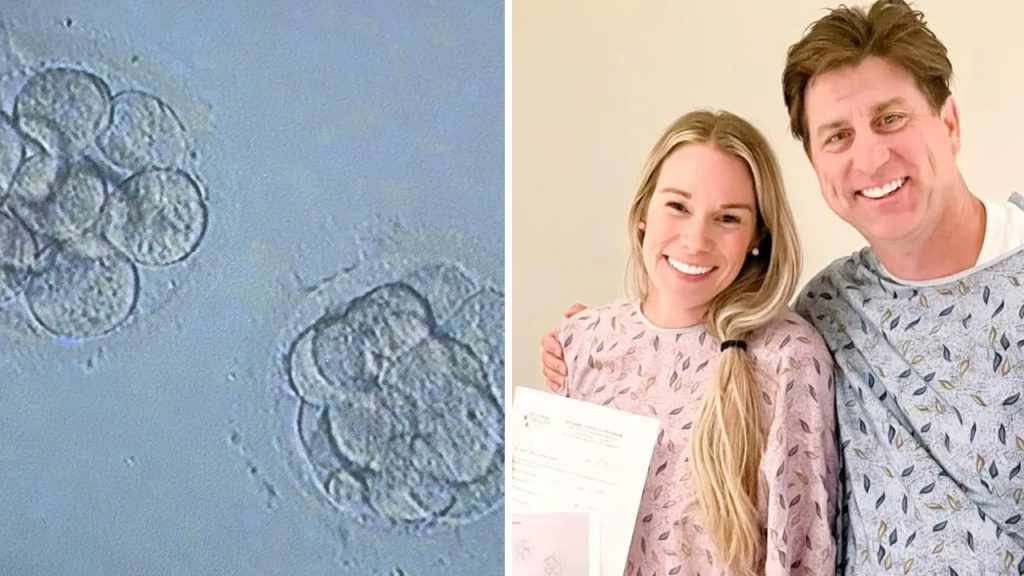Tanis Larson and her husband Dave Larson struggled with infertility for two years before undergoing in vitro fertilization (IVF) treatment in 2010. After the treatment, Tanis had 13 healthy embryos to start her family. She became pregnant with her firstborn son, Kai, in August 2011. Over the following years, they used more embryos from the initial batch and welcomed two more children through IVF. They were surprised when Tanis became pregnant naturally with their fourth child, a girl named Suzy, followed by a fifth child, Summer, who was born with Down syndrome. Despite this, the couple decided to use their two remaining frozen embryos from 2010, and Tanis is currently expecting her fourth boy.
Tanis and Dave Larson were content with their growing family, but they decided to use their two remaining frozen embryos from 2010. Tanis is currently 32 weeks pregnant with her fourth boy, meaning all four of her boys will have come from the same IVF treatment in 2010. Tanis wants to give hope to other moms struggling with infertility, emphasizing the importance of never giving up on having a family. Despite backlash online for having more children after giving birth to a child with Down syndrome, Dr. Mickey Coffler, a reproductive endocrinologist, stated that the chromosomal abnormality risk remains the same as it was when Tanis had her first IVF treatment.
Debates over IVF have been in the news recently, with Alabama Governor Kay Ivey signing a bill into law protecting IVF treatments following a February decision by the state Supreme Court affecting some fertility clinics. The law aims to ensure clinics can resume operations for IVF patients without facing legal challenges. Governor Ivey emphasized that Alabama aims to foster a culture of life that includes supporting IVF. The legislation protects medical professionals from civil and criminal immunity in cases of damage to embryos, following a court ruling allowing couples to file wrongful death claims for embryos lost during a mishap at a storage facility.
The Larsens’ story of continuing to expand their family through a mix of IVF and natural pregnancies has garnered attention, particularly with the news of Tanis expecting her fourth child conceived from the same batch of frozen embryos. Despite the challenges and criticisms they have faced, the Larsens remain committed to their growing family. Their journey serves as a reminder of the complexities and possibilities of modern fertility treatments, as well as the personal choices individuals and couples make in pursuing their dream of having children. The support they have received alongside the obstacles they have overcome highlight the importance of access to IVF treatments and the ongoing conversation around reproductive rights and family planning.
As they prepare to welcome another child, the Larsens are navigating new experiences and uncertainties, contributing to the ongoing dialogue around IVF and infertility. Tanis’s message of hope and perseverance resonates with many facing similar challenges, as they witness the Larsens’ determination to grow their family against all odds. The mix of IVF treatments and natural pregnancies in their family story reflects the diverse paths individuals and couples may take in their fertility journeys, showcasing how science and nature can come together to bring new life into the world. The Larsens’ story serves as an inspiration to others, highlighting the power of love, resilience, and the enduring desire for family that transcends any obstacles encountered along the way.


